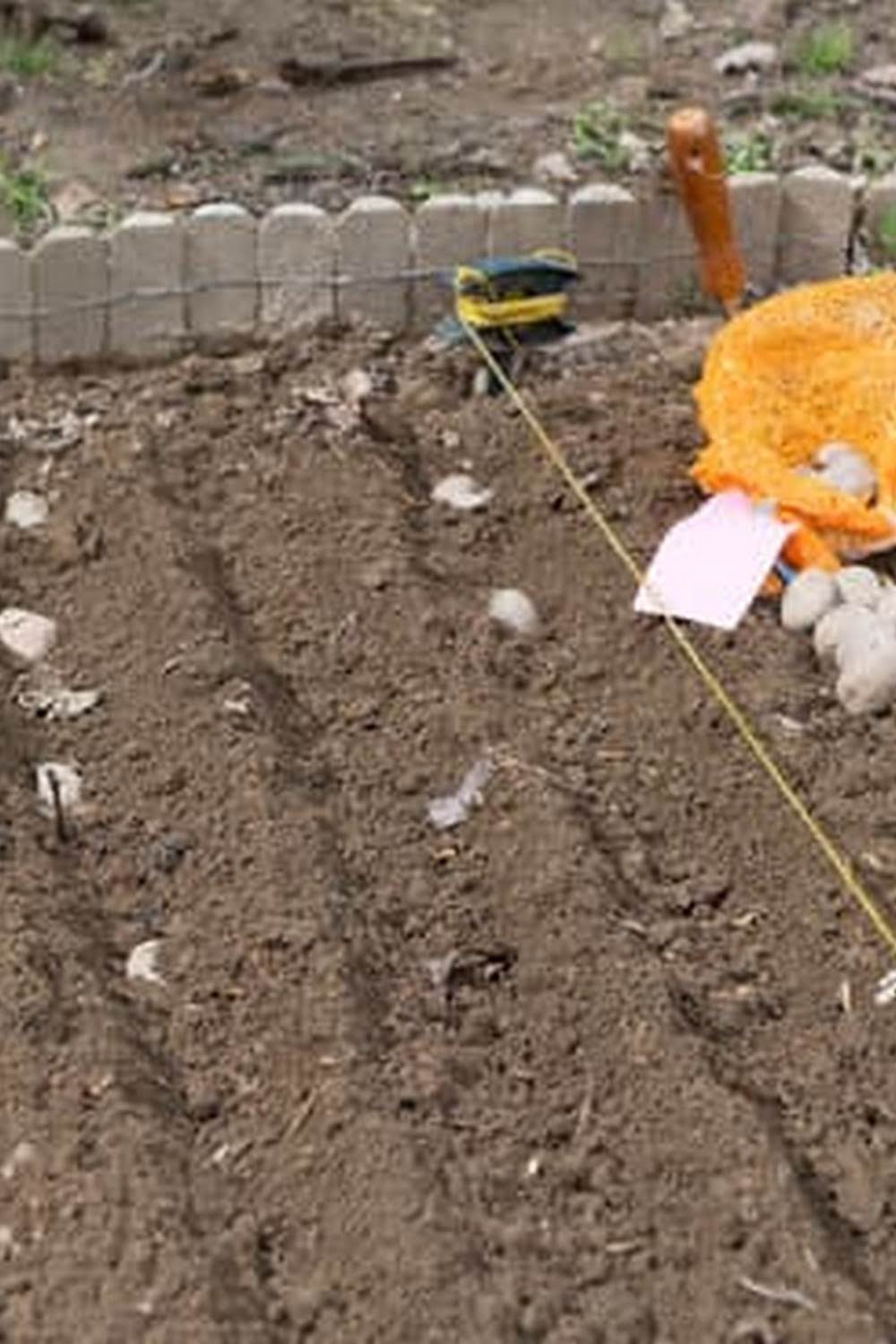Rooftop gardening is gaining popularity among urban dwellers looking to cultivate fresh produce in limited spaces. The trend of growing vegetables on rooftops has been embraced for its numerous benefits, including sustainability, accessibility to fresh produce, and a greener urban environment.
With the increasing focus on sustainable living and food security, rooftop gardening offers a practical solution for city dwellers to grow their own vegetables. By utilizing available rooftop spaces, individuals can reduce their carbon footprint, save on grocery bills, and enjoy the satisfaction of harvesting homegrown produce.
One key aspect of rooftop gardening is selecting the right vegetables that thrive in such environments. Factors like sunlight exposure, available space, and local climate conditions play a crucial role in determining which vegetables are best suited for rooftop gardens. By choosing the appropriate plants, urban gardeners can optimize their rooftop space for a bountiful harvest of fresh and nutritious vegetables.
Selecting the Right Vegetables
Rooftop gardening is an excellent way for urban dwellers to enjoy fresh produce right at their doorstep while also maximizing the use of available space. When it comes to selecting the right vegetables for rooftop gardens, several factors need to be considered in order to ensure a successful harvest. The choice of vegetables should take into account the amount of sunlight the rooftop receives, the available space for plant growth, and the local climate conditions.
Sunlight Requirements
One crucial factor to consider when selecting vegetables for rooftop gardening is the amount of sunlight your rooftop receives. Most vegetable plants require at least 6-8 hours of direct sunlight daily to thrive and produce a good yield.
Vegetables like tomatoes, peppers, cucumbers, and lettuce are sun-loving plants that do well in full sun conditions. On the other hand, leafy greens such as spinach and arugula can tolerate some shade and might be suitable for rooftops with limited sun exposure.
Space Limitations
Another essential aspect to keep in mind when choosing vegetables for rooftop gardens is the available space for planting. In smaller rooftop setups, it’s best to focus on compact or dwarf varieties that won’t take up too much room.
Vegetables like cherry tomatoes, bush beans, radishes, and herbs are excellent choices for container gardening on rooftops due to their compact growth habits. Additionally, vertical gardening techniques can be used to make the most of limited space by growing climbing vegetables like peas or cucumbers on trellises.
Climate Considerations
Considering your local climate is also essential when deciding which vegetables to grow on your rooftop garden. Some vegetable plants are more tolerant of heat or cold than others, so it’s crucial to choose varieties that are well-suited to your specific climate.
For instance, hot weather crops like eggplants, zucchini, and okra thrive in warm climates and may not do as well in cooler regions. Conversely, cool-season vegetables such as lettuce, kale, carrots, and radishes can handle lower temperatures better and are ideal for rooftop gardens in colder areas where frost is common.
Container Selection
Rooftop gardening is a fantastic way to make use of urban spaces and grow your own fresh vegetables right at home. One of the key aspects of rooftop gardening is choosing the right containers for your vegetable plants. When it comes to container selection, there are several options to consider that can cater to different needs and preferences.
Pots
Pots are a popular choice for rooftop vegetable gardening due to their versatility and ease of use. They come in various sizes, shapes, and materials, allowing you to plant a wide range of vegetables depending on the available space. Plastic pots are lightweight and easy to move around, while terracotta pots provide better insulation for plant roots. Make sure the pots have drainage holes at the bottom to prevent waterlogging.
Raised Beds
Raised beds are another excellent choice for rooftop vegetable gardening, especially if you have a larger area to work with. They offer better soil depth, which allows for healthier root development and increased yields. Raised beds can be built from wood, metal, or even repurposed materials like old crates or pallets. Ensure that the raised bed is sturdy enough to withstand strong winds or heavy rainfall.
Hanging Planters
Hanging planters are ideal for maximizing vertical space in a rooftop garden. They can be hung from railings, walls, or ceilings, adding a decorative element while saving valuable floor space. Hanging planters are perfect for trailing vegetables like cherry tomatoes or vine crops such as cucumbers and beans.
Be sure to secure the planters properly to prevent accidents and choose lightweight materials that won’t put too much strain on the structure. By exploring these different container options for rooftop vegetable gardening, you can customize your garden based on your specific needs and create a thriving oasis of fresh produce right above your head.
Soil and Fertilizer
Rooftop gardening comes with its unique set of challenges, especially when it comes to choosing the right soil and fertilizers for optimal vegetable growth. The key to success in rooftop gardening lies in selecting the appropriate soil mix that provides essential nutrients while promoting proper drainage. Since rooftop gardens can be exposed to harsh elements like wind and extreme temperatures, it is crucial to choose a lightweight but nutrient-rich soil that retains moisture without becoming waterlogged.
One popular option for rooftop vegetable gardening is a mix of peat moss, vermiculite, and compost. This combination provides good aeration, drainage, and moisture retention qualities essential for healthy plant growth. Additionally, incorporating organic matter into the soil mix helps improve its structure over time and enhances nutrient uptake by vegetable plants. When it comes to fertilizers, using organic options like compost tea or seaweed extract can help nourish the plants without introducing harmful chemicals into the environment.
Properly maintaining the soil quality in rooftop gardens is vital for sustained vegetable growth and productivity throughout the growing season. Regular soil testing can help monitor nutrient levels and pH balance, allowing gardeners to make necessary adjustments as needed. By investing time in selecting the right soil mix and using organic fertilizers, rooftop gardeners can create a thriving environment for their vegetables to flourish despite being high above the ground level.
| Aspect | Recommendation |
|---|---|
| Soil Mix | Peat moss, vermiculite, and compost combination |
| Fertilizer | Organic options like compost tea or seaweed extract |
| Maintenance | Regular soil testing for monitoring nutrient levels |
Watering and Drainage
Rooftop gardening presents a unique set of challenges when it comes to watering and drainage. With limited space and potentially different environmental conditions than ground-level gardens, it is crucial to pay special attention to these aspects for successful vegetable growth. Here are some key factors to consider:
1. Watering Techniques:
Proper watering is essential for the health and growth of vegetables in rooftop gardens. Since water can evaporate more quickly at higher altitudes, it is important to monitor soil moisture regularly. Consider using a drip irrigation system or self-watering containers to ensure a consistent water supply for your plants. Additionally, watering early in the morning or late in the evening can help minimize evaporation losses.
2. Drainage Systems:
Effective drainage is critical in rooftop gardening to prevent waterlogging, which can lead to root rot and other issues. Make sure your containers have drainage holes at the bottom to allow excess water to escape. You can also add a layer of gravel or perlite at the bottom of pots to improve drainage. Consider elevating containers on bricks or risers to ensure proper airflow and drainage underneath.
3. Mulching:
Mulching is another important practice that can help retain moisture in rooftop gardens while also improving soil structure and reducing weed growth. Organic mulches like straw, shredded leaves, or compost can be used to cover the soil surface around vegetable plants. Mulching will not only conserve water but also regulate soil temperature, promoting healthy root development for your vegetables.
By implementing these watering techniques, ensuring proper drainage systems, and incorporating mulching practices, you can set yourself up for success in growing vegetables on rooftop gardens. Remember that consistency is key when it comes to maintaining optimal moisture levels for your plants’ growth and productivity.
Sunlight Exposure
Rooftop gardening is a fantastic way to bring greenery and fresh produce into urban environments where space is limited. One crucial factor for successful rooftop vegetable gardening is proper sunlight exposure. Vegetables, like many plants, require adequate sunlight to thrive and produce a bountiful harvest. Here are some strategies to maximize sunlight exposure in rooftop gardens:
- Position your containers strategically: Place your vegetable containers in areas that receive the most sunlight throughout the day. Avoid shady spots or areas blocked by tall buildings or structures that can obstruct the sun’s rays.
- Utilize vertical space: If your rooftop garden has walls or railings, consider using them to hang planters or trellises for climbing vegetables like tomatoes or beans. This way, you can make use of all available sunlight without taking up precious floor space.
- Rotate your crops: Some vegetables may require more sunlight than others. By rotating your crops based on their sun requirements, you can ensure that each plant receives the optimum amount of light for healthy growth.
By following these tips and making the most of natural light, you can create an ideal environment for your rooftop vegetable garden to thrive. Remember that providing adequate sunlight not only promotes strong plant growth but also enhances the flavor and yield of your home-grown vegetables. So, make sure to prioritize sunlight exposure when planning and maintaining your rooftop garden filled with fresh vegetables.
With a little bit of planning and effort on optimizing sunlight exposure, you can enjoy a successful rooftop vegetable garden that provides you with a steady supply of delicious and nutritious produce right at your doorstep. Whether you’re growing vibrant tomatoes, crisp lettuce, or sweet bell peppers, ensuring proper sunlight exposure will be key to the success of your rooftop garden project.
Embrace the power of natural light to cultivate a thriving urban oasis filled with an abundance of vegetables right at home on your rooftop.
Pest Control
Rooftop gardening is an innovative and sustainable way for urban dwellers to cultivate their own fresh produce, right at home. One of the main challenges rooftop gardeners face is pest control. Pests such as aphids, caterpillars, and beetles can wreak havoc on vegetable plants if left unchecked. It is essential to implement strategies to prevent and manage these common pests effectively.
One effective method for preventing pest infestations in rooftop gardens is by practicing companion planting. This involves growing certain plants together that benefit each other by either repelling pests or attracting beneficial insects. For example, planting marigolds alongside your vegetables can help deter aphids due to their strong scent. Additionally, attracting ladybugs and lacewings can aid in controlling harmful insect populations naturally.
Furthermore, regularly inspecting your vegetable plants for any signs of pests or damage is crucial in early detection and management. Removing any affected leaves or pests by hand can help prevent the infestation from spreading further. In cases where pest populations are harder to control manually, using organic insecticidal soaps or neem oil can be an effective solution without harming beneficial insects or the environment.
| Key Strategies | Benefits |
|---|---|
| Companion Planting | Natural pest deterrents |
| Regular Inspections | Early detection of pest issues |
| Organic Pest Control | Safe for beneficial insects and environment |
Harvesting and Maintenance
Rooftop gardening offers urban dwellers a fantastic opportunity to grow their vegetables, promoting sustainability and providing fresh produce right at home. To ensure a bountiful harvest and successful maintenance of your rooftop garden, it is crucial to follow proper practices.
When it comes to harvesting vegetables grown in rooftop gardens, timing is key. Different vegetables have specific optimal harvesting times based on their variety and maturity. Be sure to research the best time to harvest each vegetable you are growing to enjoy them at peak flavor and nutrition. Remember to use sharp tools for cutting or picking to minimize damage to the plant.
In terms of ongoing maintenance, regular inspection of your plants is essential for identifying any signs of pests or diseases early on. Implementing a proactive pest control strategy will help protect your rooftop vegetable garden from unwanted invaders.
Additionally, consistent watering, proper fertilization, and adequate sunlight exposure are essential elements in maintaining healthy vegetable plants on rooftops. By dedicating time and effort to nurturing your rooftop garden, you can enjoy a continuous supply of fresh, homegrown vegetables throughout the growing season.
Frequently Asked Questions
Which Vegetables Can Be Grown in Roof Top?
Vegetables that can be grown on rooftops include tomatoes, bell peppers, lettuce, kale, and spinach. These plants are ideal for rooftop gardens due to their compact size and ability to thrive in containers.
What Vegetables Grow Well in Vertical Gardens?
Vegetables that grow well in vertical gardens are leafy greens like arugula, Swiss chard, and lettuce. Herbs such as basil, parsley, and cilantro also do well in vertical gardens due to their shallow root systems.
What Vegetables Are Good for Terrace Garden?
Vegetables that are good for terrace gardens include eggplants, zucchini, cucumbers, and cherry tomatoes. These plants typically require ample sunlight and warmth to grow successfully, making them suitable for terrace gardens with good exposure to sunlight.

If you’re looking to get into vegetable gardening, or are just looking for some tips on how to make your current garden better, then you’ve come to the right place! My name is Ethel and I have been gardening for years. In this blog, I’m going to share with you some of my best tips on how to create a successful vegetable garden.





